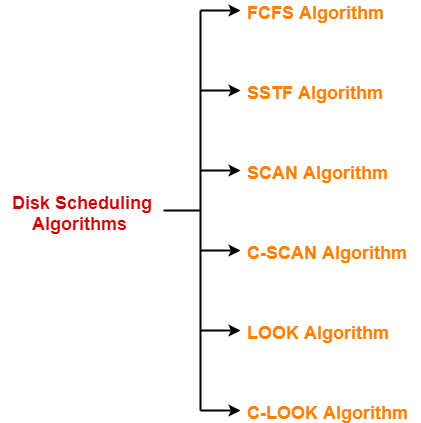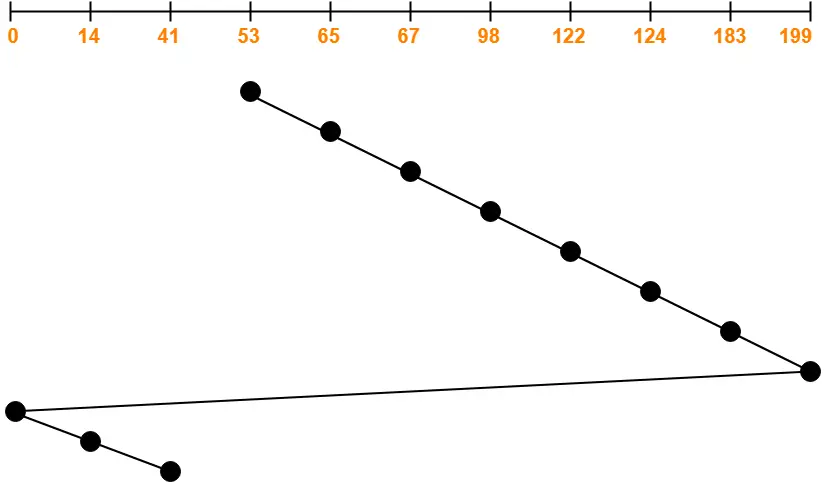Disk Scheduling Algorithms-
Before you go through this article, make sure that you have gone through the previous article on Disk Scheduling.
We have discussed-
- Disk scheduling algorithms are used to schedule multiple requests for accessing the disk.
- The purpose of disk scheduling algorithms is to reduce the total seek time.
Various disk scheduling algorithms are-

In this article, we will discuss about C-SCAN Disk Scheduling Algorithm.
C-SCAN Disk Scheduling Algorithm-
- Circular-SCAN Algorithm is an improved version of the SCAN Algorithm.
- Head starts from one end of the disk and move towards the other end servicing all the requests in between.
- After reaching the other end, head reverses its direction.
- It then returns to the starting end without servicing any request in between.
- The same process repeats.
Also Read- FCFS Disk Scheduling Algorithm
Advantages-
- The waiting time for the cylinders just visited by the head is reduced as compared to the SCAN Algorithm.
- It provides uniform waiting time.
- It provides better response time.
Disadvantages-
- It causes more seek movements as compared to SCAN Algorithm.
- It causes the head to move till the end of the disk even if there are no requests to be serviced.
Also Read- SSTF Disk Scheduling Algorithm
PRACTICE PROBLEM BASED ON C-SCAN DISK SCHEDULING ALGORITHM-
Problem-
Consider a disk queue with requests for I/O to blocks on cylinders 98, 183, 41, 122, 14, 124, 65, 67. The C-SCAN scheduling algorithm is used. The head is initially at cylinder number 53 moving towards larger cylinder numbers on its servicing pass. The cylinders are numbered from 0 to 199. The total head movement (in number of cylinders) incurred while servicing these requests is _______.
Solution-

Total head movements incurred while servicing these requests
= (65 – 53) + (67 – 65) + (98 – 67) + (122 – 98) + (124 – 122) + (183 – 124) + (199 – 183) + (199 – 0) + (14 – 0) + (41 – 14)
= 12 + 2 + 31 + 24 + 2 + 59 + 16 + 199 + 14 + 27
= 386
Alternatively,
Total head movements incurred while servicing these requests
= (199 – 53) + (199 – 0) + (41 – 0)
= 146 + 199 + 41
= 386
To gain better understanding about C-SCAN Disk Scheduling Algorithm,
Next Article- LOOK Disk Scheduling Algorithm
Get more notes and other study material of Operating System.
Watch video lectures by visiting our YouTube channel LearnVidFun.

